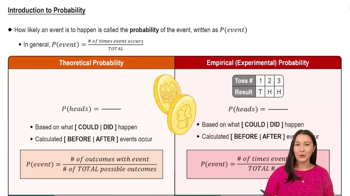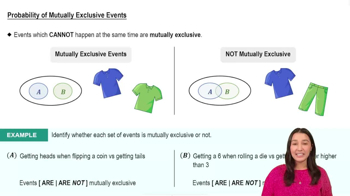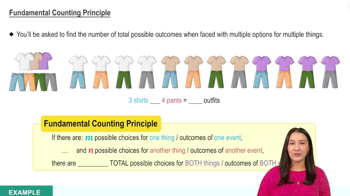Here are the essential concepts you must grasp in order to answer the question correctly.
Probability
Probability is a measure of the likelihood that an event will occur, expressed as a number between 0 and 1. In this context, it involves calculating the chance of randomly selecting a person who wears only contacts or only glasses from the total surveyed population. The probability can be determined by dividing the number of favorable outcomes by the total number of outcomes.
Recommended video:
Introduction to Probability
Mutually Exclusive Events
Mutually exclusive events are events that cannot occur at the same time. In this survey, wearing only contacts and wearing only glasses are mutually exclusive; a person cannot wear both at the same time. Understanding this concept is crucial for accurately calculating the probability of selecting someone who wears either only contacts or only glasses.
Recommended video:
Probability of Mutually Exclusive Events
Total Outcomes
Total outcomes refer to the complete set of possible results in a probability scenario. In this case, the total number of surveyed individuals is 3203, which serves as the denominator when calculating probabilities. Knowing the total outcomes is essential for determining the probability of specific events, such as wearing only contacts or only glasses.
Recommended video:
Fundamental Counting Principle

 Verified step by step guidance
Verified step by step guidance Verified video answer for a similar problem:
Verified video answer for a similar problem:



 5:14m
5:14m